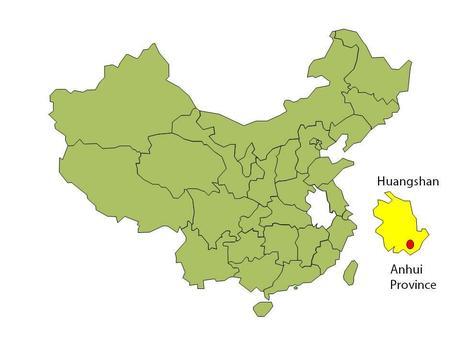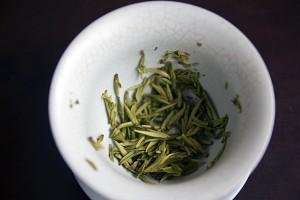Huangshan Maofeng is one of the stalwarts of any given China Top Ten Famous Tea list and probably the most famous Chinese Green Tea after Xihu Longjing and Dongting Biluochun. Grown in the gorgeous UNESCO heritage site of Huangshan, this exquisite tea is every bit as ethereal as its place of origin.
Behind Huangshan Maofeng, there is also an intriguing tale about the aftermath of civil war and one man’s efforts to raise his family out of poverty.
The birthplace of Huangshan Maofeng
Before we get there, let’s look at Huangshan in Anhui province or more specifically Caoxi Village, now known as Fuxi Village.

Caoxi Village (曹溪村) is literally translated as Cao Stream Village- with Cao being the family name with among other bearers, the infamous Cao Cao from the 3 Kingdoms Era. Ever since the Sui and Tang Dynasty, the Cao family has populated this area and as the village was located beside a stream, it took on the unassuming name of Caoxi village.
The protagonist of this tale is not a Cao descendant rather it is a Xie (谢) whose family had traditionally served the Cao family. Through the years with hard work and faithfulness, the Xie family managed to improve their social status. In contrast, the Cao family fortunes declined with most of the family moving elsewhere in search of greener pastures. So much so during the late 19th century this village was renamed Caoxi Village (漕溪村)- a homonym which means ‘canal’ instead of the family name- to illustrate the change.
Xie Zheng An (谢正安)- the creator of Huangshan Maofeng
With the stage set, it’s time to introduce the main protagonist- Mr Xie Zheng An (1838-1910). Xie was born in Caoxi Village. In 1856 at age 18, he learned the ropes of the tea business under the tutelage of his father-in-law.
His timing couldn’t have been worse as by 1860, the Taiping Rebellion led by Hong Xiuquan had overrun much of southern China and spread to Anhui and Jiangxi where Xie’s father-in-law was operating. With war and trade restriction, poverty was widespread and like many of the Anhui merchants of the day, Xie’s hard-earned savings were wiped out.
To accentuate his woes, his younger brother died in an epidemic, as did many of his uncles. Faced with economic hardship, Xie had little choice but to return to his hometown Caoxi Village and took his family to a nearby mountain where they planted crops and tea plants, primarily for subsistence.
Towards the end of the 1860s, the Taiping Rebellion was effectively quelled and peace ensued. Xie seeing a return to normalcy, begun his return to his old trade. Based in his hometown of Caoxi Village, he begun to purchase raw tea leaves from his neighboring farmers and produced them for sale in Shanghai, which was 2-3 days away by boat.

Xie returned to his hometown with a vengeance and learned from the tea masters with the hope of creating his own niche. With his experiments and tenacity, Xie used wok-roasting for ‘shaqing’, hand-rolling and 2 stages of baking to dry the leaves. This was a departure from the typical local styles of wok-roasting in the final stages.
That result was Huangshan Maofeng, the flagship product of Xie’s newly opened company- Xie Yu Da (谢裕大) Tea Merchants.
What’s in a name?
Huangshan Maofeng was characterized by the following description:
“白毫披身,芽尖锋芒”
This poetic couplet can best be translated as “Covered with downy fur, buds with sharp edges”
As the name 锋 is often used to describe blades- with violent connotations that sound out of place where it relates to something as beautiful and cultured as tea- the homonym 峰 which means peak was substituted.
Taking its name after Huangshan where Caoxi Village is located, this became known as Huangshan Maofeng or Huangshan Furry Peak.
Huangshan Maofeng Today
Though it was initially the creation of Xie Yu Da, it eventually became one of the staple products of Huangshan.
Today, on almost any given edition of China’s Top 10 Famous Teas, you can see Huangshan Maofeng standing tall. As already mentioned, other than Xihu Longjing and Biluochun, this is probably the best known Chinese green tea.
Not bad for a tea that was birthed out of desperation.
See Huangshan Maofeng in stores now
(Currently at 15% discount until 18th Jan 2013)
